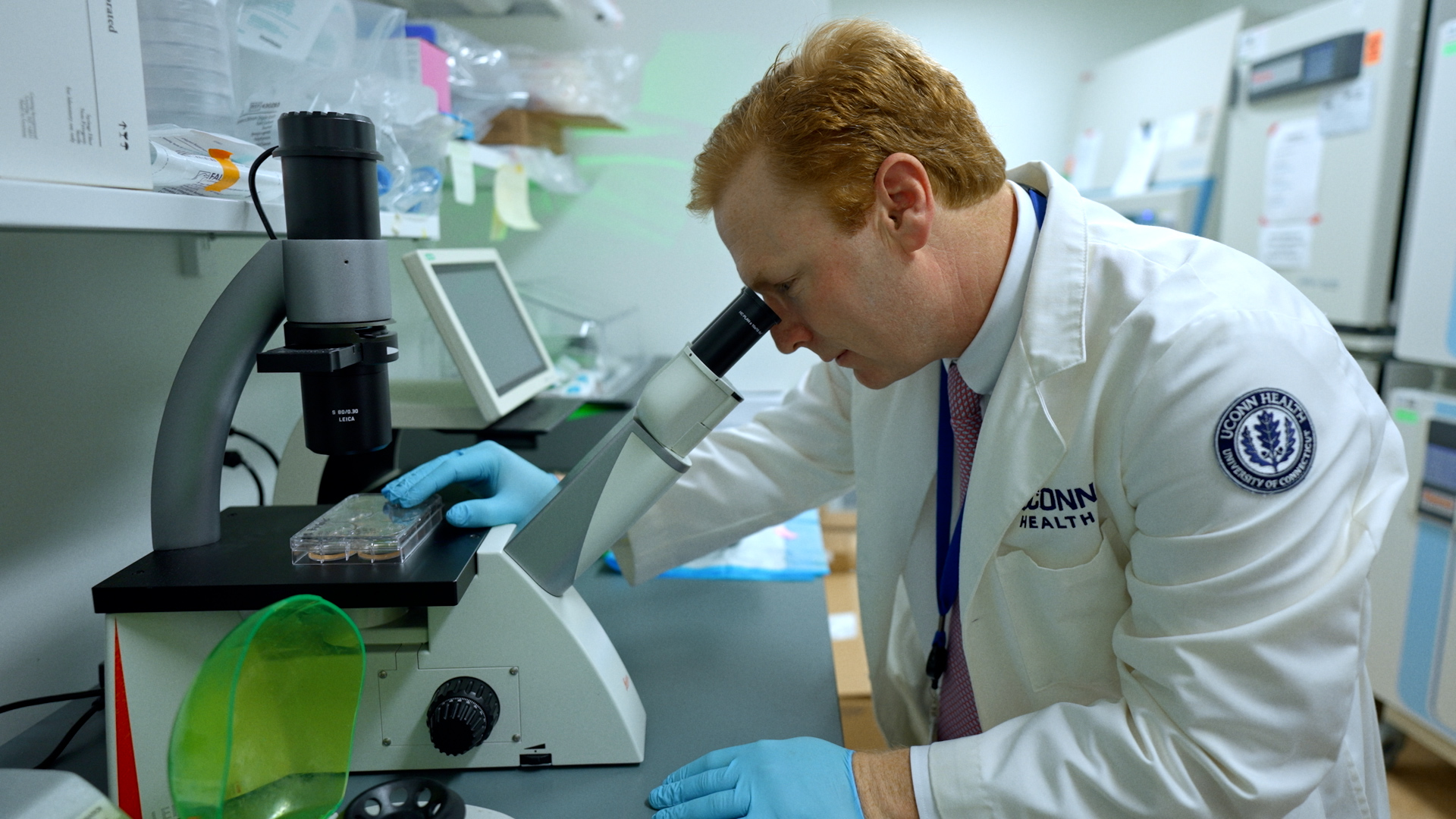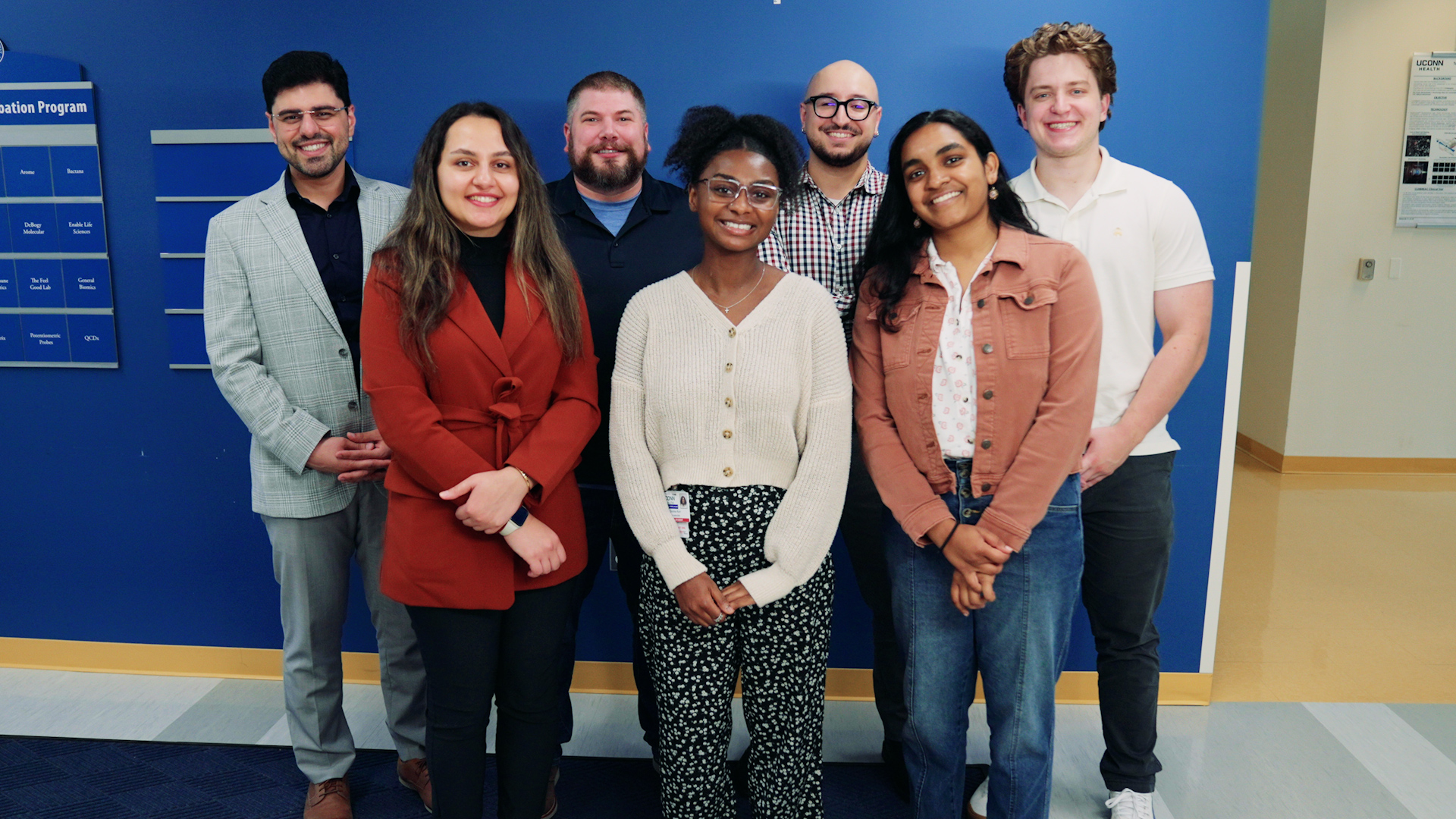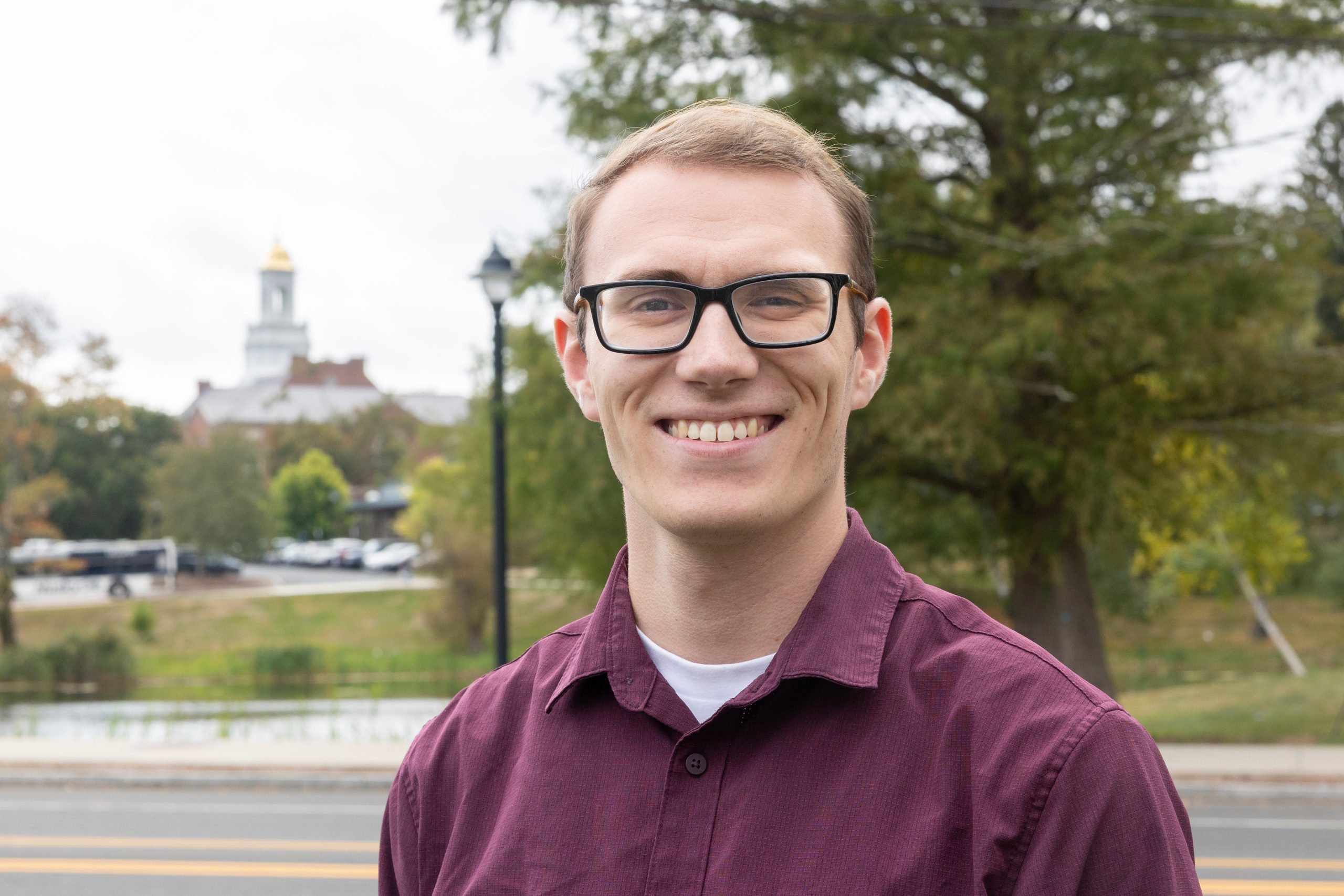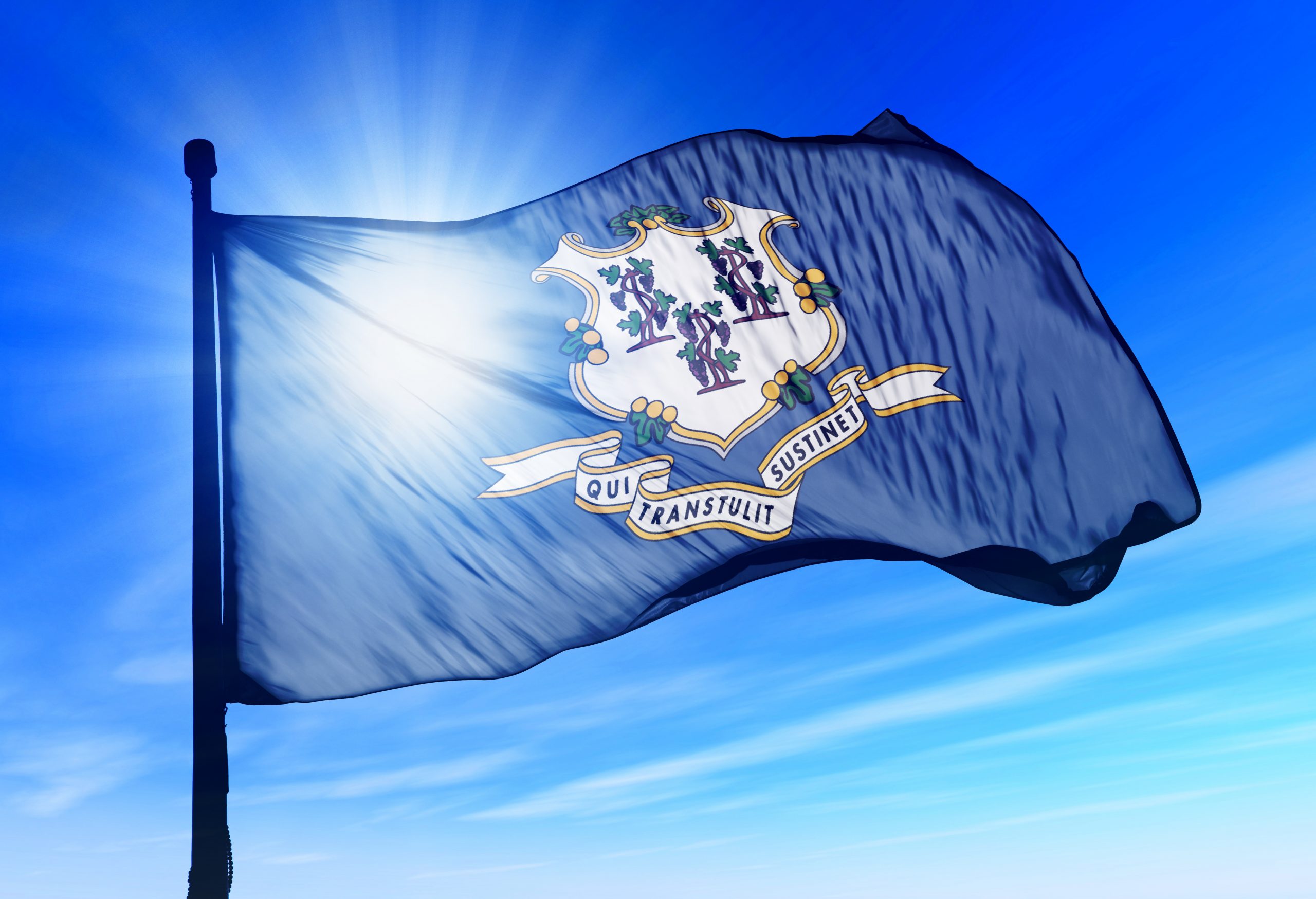Student’s IDEA Project Looks at US Media Bias Around Political Ideology
Like most of her peers, Katerina Anikeev ’27 (CLAS) says she consumes news from a variety of sources, with a copy of the Morning Brew and headlines from a couple of the country’s largest newspapers popping into her email each day.
She recently subscribed to an independent newsletter that delivers curated stories, and, yes, legitimate news has shown up in her social media feed, oftentimes regurgitations of articles from mainstream sources.
“But it’s really easy to get hoodwinked by someone wearing a suit on the internet and pointing to a graph,” she says of what she finds on social media. “If you don’t go to an outside source to fact-check it, it’s easy to just believe them.”
And that’s just one of several reasons, Anikeev, a double major in political science and applied data analysis, embarked on the project “Evaluating Anti-Communism: An Analysis of Bias in U.S. News Media,” which is supported by a UConn IDEA Grant through the Office of Undergraduate Research.
“Media literacy is proven to be on the decline, and I want to start a conversation about how we can improve it in the country,” she says.
The Brookfield native conceived the project early last year while doing her usual skimming of stories, mostly those related to U.S. politics and the election, and thought she noticed a pattern in the way the word “communism” was being used. Rarely did it have a neutral connotation; it almost always had a negative bent, she thought.
She wondered whether that was an accurate observation – mainstream media fanning anti-communist flames – or whether she was just taking note of such sentiments and not picking up on others.
“The media plays a big part in influencing people’s decisions and developing their political beliefs, and it’s generally accepted that people choose how to vote based on the news they consume. I started thinking that if the major news sources had high levels of anti-communist sentiment that could be one of the reasons there isn’t a major leftist party in the United States,” she says.
In the fall, she started surveying stories from the New York Times, Washington Post, and Wall Street Journal, outlets that represent the American political spectrum and are among the most widely read newspapers in the country.
She also decided to consider stories from CNN and Fox News, both with high viewership and often considered at opposite ends of the political spectrum, although she has yet to add them to her analysis.
Anikeev used a database at UConn to search for news stories from 2023, before the crush of the presidential election cycle, that included the keywords “communism,” “socialism,” “Marxism,” or “leftist.” That gave her over 200 stories from the New York Times, over 300 from the Washington Post, and over 400 from the Wall Street Journal.
Using a random number generator, she selected a sample size of 50 articles from each of the three newspapers and used a spreadsheet to track basic data, including title, citation, date published, and which keyword was present in each story.
As she read the articles, she also recorded the context in which the keyword was used and noted whether it was extremely or vaguely anti-communist, had no anti-communist sentiment, or viewed it favorably.
Some stories, she notes, were labeled as uncertain, because they were confusing or presented multiple viewpoints.
While for the purpose of her study definitions don’t matter, she explains that communism is defined as a stateless, classless society, and socialism is a society in which the government provides universal basic needs. Marxism is a specific form of communism as envisioned by Karl Marx, and leftism is an umbrella term for various ideologies critical of, or hostile to, capitalism.
“But all the words are used almost synonymously when they’re uttered in a rhetorical way or meant as inflammatory terms. They’re kind of an ‘other’ that people can identify as ‘bad’ and be against,” she says.
After spending months pouring through stories and data, Anikeev says she was “pleasantly surprised” to find that most reporting in the three newspapers was unbiased.
In the New York Times, four of the 50 stories, or 8%, had clear anti-communist sentiment. Another four were vaguely anti-communist, 32 had no anti-communist sentiment, three had somewhat positive interpretations of communism, four were difficult to understand, and three were marked as miscellaneous, or “other.”
In the Washington Post, three of the 50, or 6%, had clear anti-communist sentiment. Six were vaguely anti-communist, and 41 were neutral or had no sentiment present.
In the Wall Street Journal, 23 of the 50, or 46%, had clear anti-communist sentiment. Eleven were vaguely anti-communist, 11 had no anti-communist sentiment, and five were difficult to understand.
Anikeev says she noticed many stories in the sample were about the latest Israel-Hamas war and included words like “leftist” to describe protesting college students in a negative way. The Wall Street Journal stories, she found, especially carried the theme of colleges indoctrinating students in “leftist” beliefs.
“One fault of the database I was using is it wouldn’t always tell me if the story was an editorial, so that definitely could be part of the difference in the Wall Street Journal,” she says, speculating that at least some of the biased stories probably would have been published on op-ed pages.
“Regardless, if it’s an editorial or not, it goes against journalistic standards to make these very bold claims – bashing whole universities and universities as a concept – and not provide quotes from people involved, not provide any statistics or information, not doing any interviews,” she says. “It’s not professional, and also it’s clearly biased against an idea that they perceive as communist.”
Anikeev says she plans to present her full research during the Fall Frontiers Poster Exhibition in late 2025, after spending next semester in Washington, D.C., as an intern for U.S. Rep. Joseph D. Courtney. She also hopes to publish her findings in a to-be-determined undergraduate journal.
“Above all though, this gets a conversation going about what we should be looking at in the news and how we can better convey to the average person what they should be on the lookout for and how they might think more critically about what they’re reading,” she says.
Latest UConn Today
- Treating Hearts PersonallyPrecision medicine for heart failure patients
- Five Years Later, Are Students Bouncing Back from the Pandemic?UConn–Education Department partnership investigates and supports K-12 student recovery
- UConn Cancer Care Startup Goes Global (and Beyond)Encapsulate, a MedTech company founded by UConn alumni, closes seed round and aims ever higher
- What Happens When Local Hospitals Stop Delivering Babies? UConn Anthropology Student is Hoping to Find Out'The goal of this project is, within the medical anthropology context, to really look at people’s lived experiences'
- UConn Magazine: UnrivaledForgive Napheesa Collier and Breanna Stewart for not gushing over the success of Unrivaled, the three on three women’s basketball league they cofounded
- New Interactive Map of Connecticut Nonprofits Rolled Out to Help With Decision-Making'Nonprofits have saved the State of Connecticut billions, not millions, of dollars. They took on some of the toughest public services'













